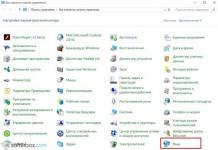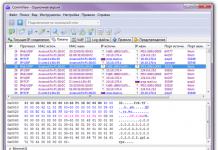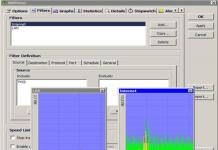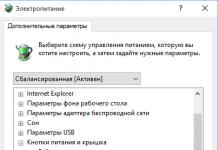Yandex Browser allows each user to connect and disable modules. These are software blocks that are installed in the browser, thereby increasing its functionality.
Modules can be used for different purposes. Thus, they are installed for playing audio and video content in the browser, viewing PDF files, as well as for tasks such as improving the performance of web services, etc.
As a rule, modules need to be installed in cases where the site has specific content. It could be a video or something else. In order for it to display correctly, you may need to install a specific module.
Yandex.Browser itself notifies you that the module needs to be installed and prompts the user to do this through a notification at the top of the page. Modules are downloaded from developer sites and installed in the browser in a simple way.
How to open the modules menu in Yandex Browser?
If you need to disable/enable the plugin in the Yandex browser, you can do it like this:
1. follow the path Menu > Settings > Show advanced settings;
2. in the section " Personal data» select « Content Settings»;

3. in the window that opens, look for the section “ Plugins" and click on the small link " Managing individual plugins»

Just write in the address bar browser://plugins and we get to the menu with modules.

How to work with modules?
On this page, you can manage connected modules as you wish: enable or disable them, and view detailed information. The latter can be done by clicking on the " More details" on the right side of the window. But, unfortunately, it is impossible to install them separately manually. All new modules appear along with the browser update, and if necessary, install the latest version.
Users often turn to modules when they have problems playing Flash videos. This is discussed in more detail in the article, the link to which you will find below.
By default, all plugins in the browser are enabled, and you should disable them only if there are any specific problems. In particular, this also applies to Adobe Flash Player, with which users often have problems.
How to remove a module?
You cannot remove modules installed in the browser. They can only be turned off. This is easy to do - open the window with modules, select the desired module and disable it. However, we do not recommend doing this if the browser is stable.

Updating legacy modules
Sometimes new versions of modules are released, and they are not updated independently. At the same time, they offer the user to update when the module version becomes outdated. The browser detects the need for an update and displays a corresponding message to the right of the address bar. You can update the module by clicking on the " Update module».
So, modules in Yandex Browser are one of the most important tools that are necessary for the normal display of content on various sites. You should not disable them during stable operation, otherwise most of the information will not be displayed.
Adobe Flash Player directly integrated into Google Chrome and is enabled by default. Adobe Flash Player updates are automatically included in Chrome system updates.
To use Adobe Flash in other web browsers, you need to separately download Adobe Flash Player for these browsers.
Turn Adobe Flash Player on or off
These guidelines apply to using Google Chrome on Windows, Mac, Linux, and Chrome.
Note: If you previously installed Adobe Flash Player separately, two files will be displayed for this plugin. If both are marked as enabled, the version that comes bundled with Chrome will be used. To enable a specific version of Adobe Flash Player, click Details in the upper right corner of the page. Then click the link Turn on for the version of Adobe Flash Player you want to enable. The table shows the file name for the version integrated into Google Chrome.
Linux users
In Chrome version 20 and later, Adobe Flash Player uses a new API to run its plugin in Chrome on Linux. This new API is a platform API for plugins known as API Pepper (PPAPI).
Installing Flash Player for Chromium
If you use Chromium, you must separately install Adobe Flash Player to display Flash content.
Notes for Windows
- from the Adobe website.
- When the download is complete, click the installer in the download bar at the bottom of Chrome. Follow the onscreen instructions to install Adobe Flash Player.
A Windows Account Control window may appear and ask for permission to install. If you do not have administrator rights on your computer, contact your system administrator to complete the installation process.
- Restart Chrome.
Directions for Mac
- Download the Flash Player installer from the Adobe website.
- When the download is complete, click the installer in the download bar at the bottom of Chrome.
- Double-click the install_flash_player_osx.pkg file to open the installer.
- Follow the onscreen instructions to complete the installation process.
- Restart Chrome.
Plug-ins in Google Chrome: how to open? Everyone has heard about browser application plugins that make it easier to work with various sites and programs; now rarely does anyone do without them. And today we will learn how to add plugins to one of the most popular ones, namely Chrome.
There are plugins that are installed automatically when you install a web browser, they are tested by the Chrome manufacturer, they can be changed and modified. Among them are Adobe Flash Player, Adobe PDF, Adobe Shockwave, DivXPlus Web Player, Java, Microsoft Silverlight, Quick Time, Real Player, Windows Media Player.

The user can also deliver third-party plugins, but this is not always safe, so you should be sure what exactly the application is and where you are installing from.
To enable the plugin, just type chrome: // plugins / in the browser line and press Enter, and in the window that opens, opposite the desired plugin, click the enable button. In the same way, we can disable a plugin we don’t need.

In order to download new plugins, just open Chrome settings, Extension, Other extensions and in the mountain on the left enter the application we need in the search. They are paid and free.
Flash Player is not enabled. How to activate it in Google Chrome? (Google Chrome)
In Google Chrome, sometimes videos do not play, giving the error “Adobe Flash Player is already installed, but is disabled...”. The Flash player is based on the Netscape Plug-in Programming Interface (NPAPI). The official Google website reports that all plugins created using this technology harm browser security, and most of the functions of some plugins are taken over by HTML5 code. For this reason, it was decided to abandon such plugins as of 09/01/15. But below is a way to deal with this.
Ways to enable the Adobe Flash Player plugin
First of all, let’s check whether you have the latest version of the browser; if not, then update to the latest version. If Flash Player does not work after the update, then you will need to enable this plugin in Google Chrome. Open the menu in the upper right corner of the Settings and management of Google Chrome window and select Settings
In the settings that open, we look for Show advanced settings...
Find the Personal Data section and click the Content Settings button
After that, look for the Plugins subsection and click manage individual plugins
In the plugins window, find Adobe Flash Player and enable it.
Easy way
In order to avoid searching through menus, submenus and generally a useless waste of time searching for settings buried in the depths of the browser, simply enter chrome://plugins/ in the address bar and press Enter in the loaded page with plugins, find Flash player - turn it on or off and check the box "Always run". In the address bar, enter chrome://components/ and find the “pepper_flash” section, click Check for updates.
Sometimes it happens like this - you installed Flash Player while Google Chrome or another browser is turned on, then you just need to restart the browser. If the problem is not solved by this method, then we can advise you to switch to another browser, for example Mozilla Firefox, Opera, etc.
In the new version of the browser, or rather starting from version 56, it is no longer possible to see which plugins are installed in Chrome since access to the plugin control panel is closed. By default, and at the same time the Chrome plugins are updated. In older versions of the browser, you could open a tab with installed plugins by typing chrome://plugins/ or about://plugins/ into the address bar and pressing the Enter key on the keyboard. This tab displayed all installed plugins that could be disabled or enabled as needed. In new versions of the browser, they consider that all installed plugins should work, with the exception of the plugin for accessing the computer and Flash.
Flash plugin
Plugins Browser Chrome open through settingsTo get to the settings for these plugins, you need to click on the three dots located in the upper right part of the browser and select Settings in the context menu that opens.
 If Flash does not work in Chrome, it may be disabled for you.
If Flash does not work in Chrome, it may be disabled for you. In the settings at the very bottom, click on Show advanced settings.
 In Chrome plugins Flash you can turn it on or off here
In Chrome plugins Flash you can turn it on or off here Then, in the paragraph titled Personal Information, click on the Content Settings button. A window called Content Settings will open, which contains the settings for these plugins.
 Here you can turn off or turn on flash in Chrome
Here you can turn off or turn on flash in Chrome In this window, find a paragraph called Flash. By placing a dot next to the desired item, you can disable or enable Flash in Chrome on all sites.
 Here you can enable Adobe Flash for certain sites in Chrome plugins
Here you can enable Adobe Flash for certain sites in Chrome plugins If you need to enable Adobe Flash for a specific site in Chrome plugins, you will need to add this site to the Google Chrome Flash exceptions. To do this, click on the Configure exceptions button. A window will open in which you need to enter the domain name of the site, for example garayev.ru, in a special line, specify the Adobe Flash Chrome rule for it and click Finish. To disable or enable Flash Plugin Chrome for this site, you will have to constantly open this window and change the rule, remembering to click the Finish button.
Plugin for computer access
 Enable plugins in chrome
Enable plugins in chrome In the window called Content Settings, find the section Accessing plugins outside the sandbox. By setting a dot at the desired item, you can allow or deny access to all sites using the plugin to access your computer. If you need to allow or deny access to a specific site, you will need to add it to the exception by clicking on the Configure exceptions button.
Installing plugins
 Plugins for Google Chrome
Plugins for Google Chrome If you need to install any additional plugin for Chrome, then open the Chrome Online Store and enter the name of the plugin or the word plugins in the search bar and press the Enter key on your keyboard. These installed Chrome plugins will be located in extensions that open through the browser menu - Additional tools - Extensions. To update Chrome plugins, you will need to update the entire browser.
5 - “Plug-ins”. These are browser modules that are used to display any files, for example, “Adobe Flash” for playing videos. It would be more convenient to leave the “Run automatically (recommended)” line active; if you select “Click to play”, then on almost every site the browser will ask permission to use, this is very inconvenient. As in previous paragraphs, here you can select sites for specific actions. There is a separate line “Disable plug-ins”.
If you click on the “Disable plug-ins” link, a window will open to enable or disable all existing browser modules. To disable, click on the word “Disable”, which is located under the name of the module, and then you can also enable the module. But it is better not to disable the module if you do not know exactly what functions it performs.

6 - “Pop-up windows”. The purpose of pop-up windows on websites is mainly to display advertising, I can’t imagine how else they can be used, in any case, you can always do without them. I'll leave it at "Block pop-ups". If some site requires the inclusion of pop-up windows, then you can add it to the exceptions - the “Manage exceptions” button.

7 - “Location determination”. Why can a site detect location? Yandex search engine for displaying weather and traffic jams, sometimes useful information for your city may be offered, and most often this is in order to advertise something to you. In my opinion, it's better to leave "Ask if a site is trying to track your location (recommended)". You cannot add a site to the exception yourself and set an action.

8 - “Alerts”. It is most often used by Google services to display notifications on the desktop, for example Google Calendar. In “Managing Exceptions”, you cannot add or delete anything, just see what exceptions there are.

9 - “Full screen”. In principle, this is only useful when working with Adobe Flash Player; mainly, a full-screen image is required for watching videos or playing games. Although advertising windows may open full screen. In exception management, I only have the YouTube site, but this was most likely already built-in, since YouTube belongs to Google. An existing site can be deleted, but a new one cannot be added and there is only one action available - “Allow”. But you can change the name of the site.


























